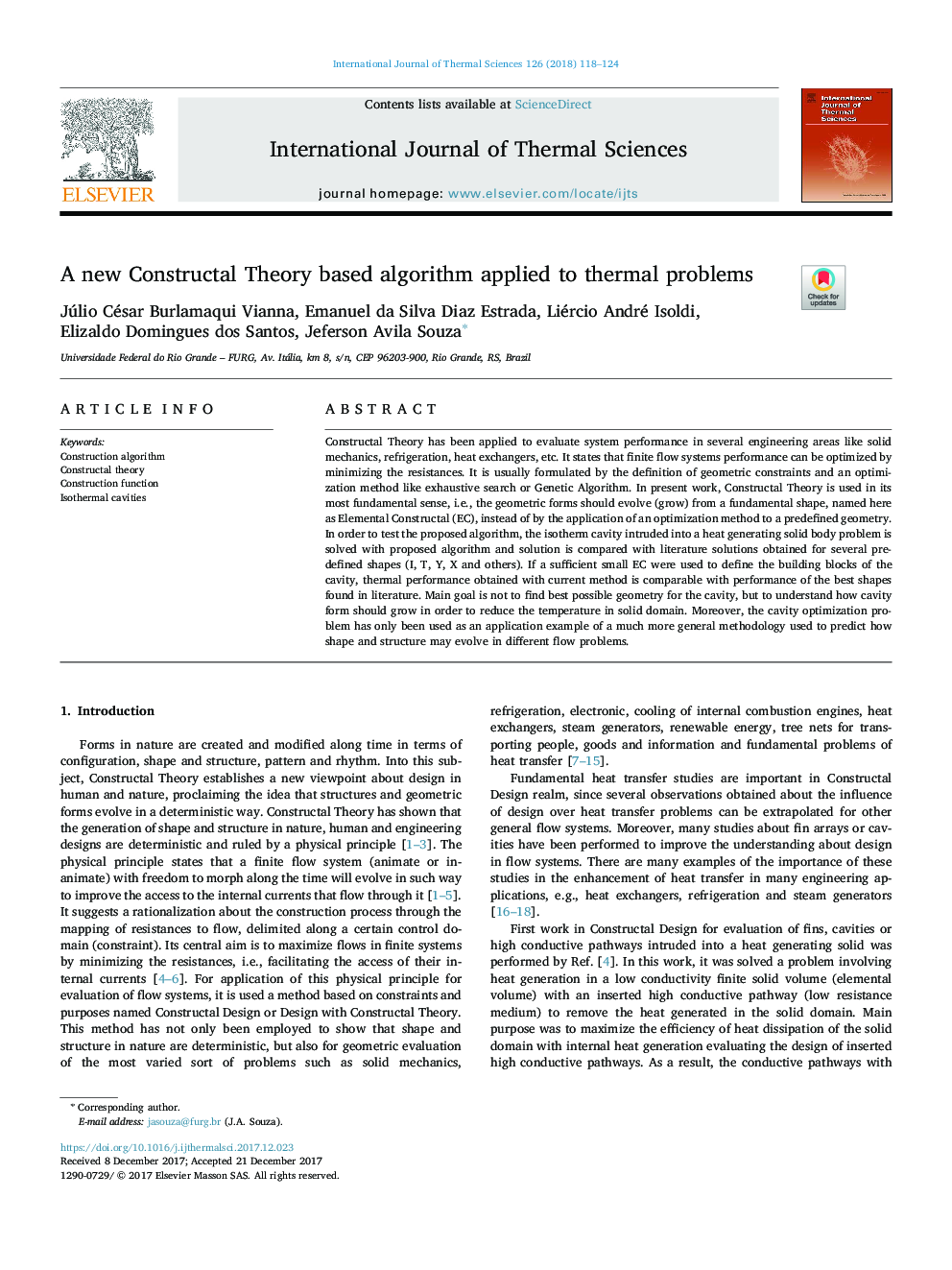| Article ID | Journal | Published Year | Pages | File Type |
|---|---|---|---|---|
| 7060795 | International Journal of Thermal Sciences | 2018 | 7 Pages |
Abstract
Constructal Theory has been applied to evaluate system performance in several engineering areas like solid mechanics, refrigeration, heat exchangers, etc. It states that finite flow systems performance can be optimized by minimizing the resistances. It is usually formulated by the definition of geometric constraints and an optimization method like exhaustive search or Genetic Algorithm. In present work, Constructal Theory is used in its most fundamental sense, i.e., the geometric forms should evolve (grow) from a fundamental shape, named here as Elemental Constructal (EC), instead of by the application of an optimization method to a predefined geometry. In order to test the proposed algorithm, the isotherm cavity intruded into a heat generating solid body problem is solved with proposed algorithm and solution is compared with literature solutions obtained for several pre-defined shapes (I, T, Y, X and others). If a sufficient small EC were used to define the building blocks of the cavity, thermal performance obtained with current method is comparable with performance of the best shapes found in literature. Main goal is not to find best possible geometry for the cavity, but to understand how cavity form should grow in order to reduce the temperature in solid domain. Moreover, the cavity optimization problem has only been used as an application example of a much more general methodology used to predict how shape and structure may evolve in different flow problems.
Related Topics
Physical Sciences and Engineering
Chemical Engineering
Fluid Flow and Transfer Processes
Authors
Júlio César Burlamaqui Vianna, Emanuel da Silva Diaz Estrada, Liércio André Isoldi, Elizaldo Domingues dos Santos, Jeferson Avila Souza,
